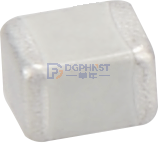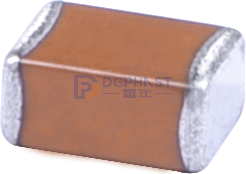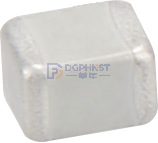The development history of Murata brand can be traced back to 1944, with ceramic technology as its core, gradually growing into a global leader in the field of electronic components. Here is a summary of its development process:

1、 Start up and Basic Technology Accumulation (1944-1970s)
In 1944, Akira Murata founded Murata Productions in Chukyo ku, Kyoto, Japan, initially as a 150 square meter ceramic workshop. In the early days, the company focused on the research and development of ceramic materials. In 1947, it collaborated with Kyoto University to launch the first barium titanate ceramic capacitor, laying its technological foundation in the field of electronic components.
In 1950, the company was officially renamed as "Murata Manufacturing Co., Ltd." and began systematic research and development. In 1955, Murata Technology Research Institute was established, gathering young technicians to develop core products such as capacitors, and establishing a diversified product line centered on ceramic materials, including ceramic filters, piezoelectric sensors, etc.
In 1962, Emperor Showa of Japan inspected the company, marking the national recognition of its technological strength; In 1973, the first overseas production base was established in the United States, opening up a global layout.
2、 Internationalization Expansion and Technological Diversification (1980-2000s)
In the 1980s, Murata accelerated its internationalization process: in 1983, a new factory was established in Izumo City, Japan. In 1987, the Nozoku business unit was established to strengthen research and development capabilities. In 1988, a production and sales company was established in Thailand, gradually forming a supply chain network covering Asia.
In 1994, Murata entered the Chinese market and established a production and sales base in Wuxi. Subsequently, subsidiaries were set up in Shenzhen and other places to produce power modules and communication equipment, gradually penetrating the consumer electronics and automotive electronics markets.
At this stage, Murata's product line further expanded to include ceramic capacitors, inductors, filters, etc., and developed high-frequency components and wireless communication modules through technological integration, consolidating its market position.
3、 Establishment of Global Leadership and Innovation Breakthrough (2010s present)
After 2010, Murata achieved leapfrog development through mergers and technological innovations
M&A strategy: In 2012, acquired RF Monolith from the United States. In 2014, acquired Peregrine Semiconductor for $471 million. In 2016, took over Sony's lithium-ion battery business and strengthened its layout in the communication module and new energy fields.
Technological innovation: Develop ultra small GNSS modules, multi-layer ceramic capacitors (MLCC), and other products, and launch the world's first ceramic catalyst free of precious metals (2024) for industrial waste gas treatment, achieving environmental protection and energy conservation goals.
Market expansion: The new management building of Shenzhen Murata Technology Co., Ltd. will be completed in 2022, and the annual sales of its Chinese business will increase 900 times compared to 2005, becoming an important pillar of the global supply chain.
4、 Core Philosophy and Social Responsibility
Murata always adheres to the principle of 'Innovator in Electronics' ®” Our philosophy is to adhere to the full chain research and development from raw materials to finished products, with products covering communication, medical, automotive electronics and other fields, and overseas sales accounting for over 90%. At the same time, the company actively participates in social responsibility, joins the Responsible Business Alliance (RBA), promotes sustainable development measures such as factory photovoltaic power generation, and demonstrates global corporate technological leadership and social responsibility.
Murata's century long development history is a transformation from a traditional ceramic workshop to an electronic component giant. Through deep technological cultivation, global layout, and continuous innovation, its market share in ceramic capacitors, sensors, and other fields has remained among the world's top (such as vibration sensors accounting for 90%), and it continues to expand its environmental protection and intelligent applications, becoming an indispensable innovation engine in the electronics industry.






